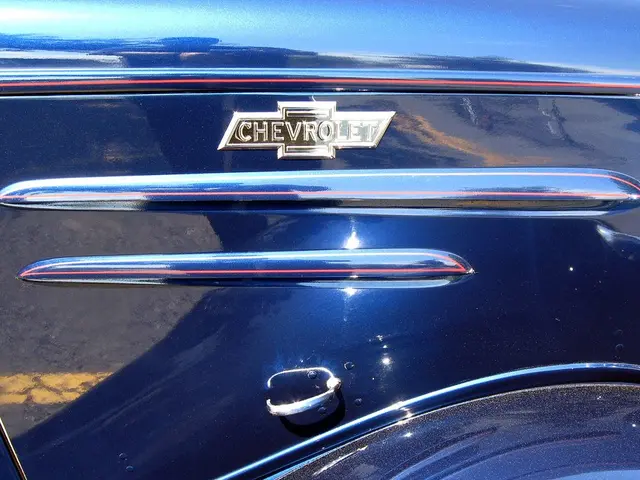In the Diamond Industry's Rough Waters: A New Era of Lab-Grown Diamonds
Artificial Diamonds Flood Market: Are Traditional Mined Diamonds Facing Extinction?
Navigating the choppy seas of the diamond industry has never been more challenging with inflation fears, slowing growth, and global trade tensions. Although these uncertainties loom, there's an additional tug on the sail. The rise of lab-grown diamonds has sent ripples through the industry, creating both panic and opportunities.
Lab-grown diamonds, once considered a novelty, have gained mainstream acceptance thanks to shifting perspectives. Close to chemical twins of mined diamonds, they're sold at a mere tenth of the price. Regardless of whether you believe in their authenticity, the lab-made diamonds are revolutionizing the industry, making it essential for buyers and sellers to keep their eyes peeled.
A Decade of Dropping Lab Diamond Prices
Ten years ago, lab-born diamonds were priced at about 10% less than mined counterparts. Over the past decade, advances in technology and production volume have caused a breathtaking decline in lab diamond prices. Now, they typically go for an 80-90% discount compared to mined diamonds.
This dramatic reduction in cost has significantly boosted market share, propelling lab diamonds from just 1% of diamond sales in 2015 to approximately 20% by 2024. The trend of lab-grown diamonds in engagement rings has also surged. According to wedding platform The Knot, 52% of central stones were lab-grown in 2024, compared to a mere 12% in 2019.
Mined Diamonds: A Shift in Consumer Preferences and Industry Patterns
The winds of change are blowing through the industry, as consumer attitudes toward diamonds are evolving. Many buyers are eager to snag a larger or higher-quality stone for the same budget. This "a diamond is a diamond" mentality, with no discernible way for consumers to tell the difference between the two, has gained momentum.
Lab-grown diamonds share similarities with generic medication. They match mined diamonds in chemical and visual properties, with the main distinction being price.
This trend finds traction within younger generations, who prioritize ethical and environmental concerns. Those who may have opted for a smaller mined diamond a decade ago now gravitate toward larger lab-grown options at the same price. Isaac Cohen, President of Isaac's Fine Jewelry in Boca Raton, is observing this evolution firsthand. "As people have become more informed about lab-grown diamonds, we have observed a striking increase in demand for jewelry featuring them. While some still prefer a natural diamond for sentimentally significant occasions, others flock to labs for everyday fine jewelry," Cohen says.
While customers relish alternatives to costly mined stones, some industry participants struggle to adapt. Many dealers with large inventories of mined diamonds have had to adjust prices lower, hurting margins. Sluggish dealers slowly embracing the trend have lost overall market share. Retailers taking proactive steps now stock lab-grown inventory and aggressively promote it. Some dealers have even abandoned selling mined diamonds.
Lab-grown diamonds are reshaping the perception of diamonds as a store of value. The influx of affordable options has diminished the resale value of older mined diamonds, leaving owners with pieces worth far less than before.
Under pressure, major mining companies like De Beers have cut production and even launched their own lab-grown lines to adapt. Industry titan Anglo-American has been attempting to sell or spin-off De Beers since May 2024 and took a $2.9 billion write-down on its De Beers stake in 2024.
The Diamond Price Forecast
The growing acceptance of lower-priced lab diamonds has placed significant downward pressure on mined diamond prices. After a brief pandemic-era boost, natural diamond prices have plummeted to multi-year lows. According to industry expert Paul Zimnisky, prices for rough, mined diamonds fell 34% from their peak in 2022 to late 2024. Lab-grown stones have effectively weakened the pricing power of natural diamonds, especially in standard sizes and qualities.
Martin Rapaport, founder of the Rapaport Diamond Report and RapNet, an online diamond trading network, has faced intense criticism for lowering diamond prices on the Rapaport Price List in January 2025. An Instagram post showing him arguing with dealers about lowered prices went viral.
Regarding lab-grown diamonds, experts predict further price drops as production scales and Chinese and Indian manufacturing costs fall. Currently priced around 90% below natural diamonds, lab-grown diamond prices could drop an additional 50-80% according to Diamond Standard CEO Cormac Kinney.
Bracing for the Future of the Diamond Industry
Walmart is offering a 5-carat round-cut diamond engagement ring with a 14k white gold band for $2,990. You'd be hard-pressed to differentiate it from a traditionally mined diamond.
As lab-grown diamonds find their way into discount retailers like Walmart, they threaten the perception of diamonds as luxury items. This shift makes it harder to associate wealth with a ring that's easily obtainable online. New trends might emerge, where a marriage proposer opts for a traditional lab-grown diamond ring complemented by a more exclusive item like a Rolex watch or a Hermès Birkin bag for added value and status. Such a break from tradition could mean devastating consequences for the diamond industry already grappling with turmoil.
The industry's tribulations are highlighted in the Netflix documentary Nothing Lasts Forever. The film unveils some of the industry's hidden secrets, including credibility concerns due to the improper mixing of lab-grown and mined diamonds and the claim that diamond scarcity has been manufactured.
According to the documentary, De Beers created the illusion of diamond scarcity by controlling supply and demand. Although relatively abundant diamonds exist, the company limited market releases to uphold high prices. Through marketing campaigns like "A Diamond Is Forever," De Beers convinced consumers that diamonds were rare, driving up demand and maintaining artificially high prices.
The deception fabricated by De Beers resembles the man behind the curtain in The Wizard of Oz. This carefully crafted illusion was exposed when the truth surfaced, revealing that diamonds are far more abundant than their marketed rarity would suggest.
The erosion of the scarcity perception and the growing acceptance of lab-grown diamonds as a credible alternative for jewelry applications are a double blow for the vast majority of the diamond industry.
A bifurcated market may emerge where exceptional, verified natural diamonds like rare, flawless, colored diamonds, remain valuable or even appreciate. On the other hand, smaller natural diamonds, indistinguishable to the naked eye from their lab counterparts, are likely to continue losing value. Consumers may enjoy lower prices on natural diamonds in the coming years, and those holding diamonds as assets should prepare for diminished expectations of value retention or appreciation. It's difficult to imagine a scenario where prices bounce back. A diamond might last forever, but its value may not.
- The rise in lab-grown diamonds has lowered their prices significantly, with lab-grown diamonds now going for an 80-90% discount compared to mined diamonds.
- In the diamond industry, the trend of lab-grown diamonds has resulted in a shift in consumer preferences, with many buyers now opting for lab-grown diamonds due to their lower prices and similar chemical and visual properties.
- As lab-grown diamonds become more affordable and accessible, their growing acceptance threatens the perception of diamonds as luxury items, potentially leading to a bifurcated market where exceptional, verified natural diamonds retain value, while smaller natural diamonds continue to lose value.




